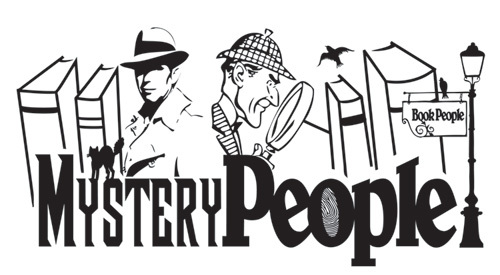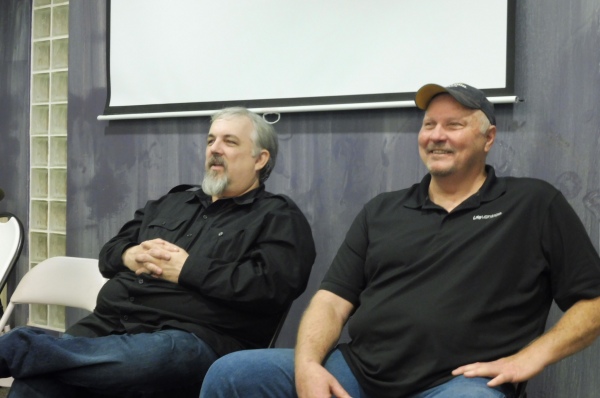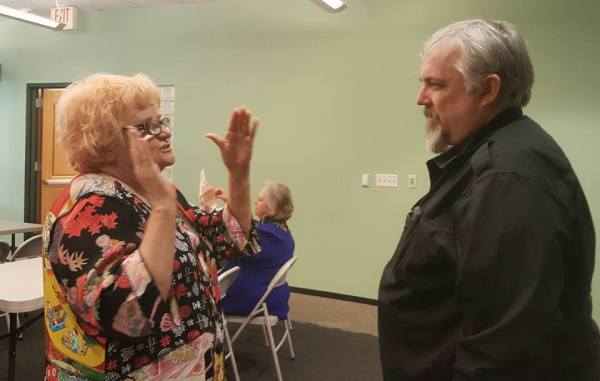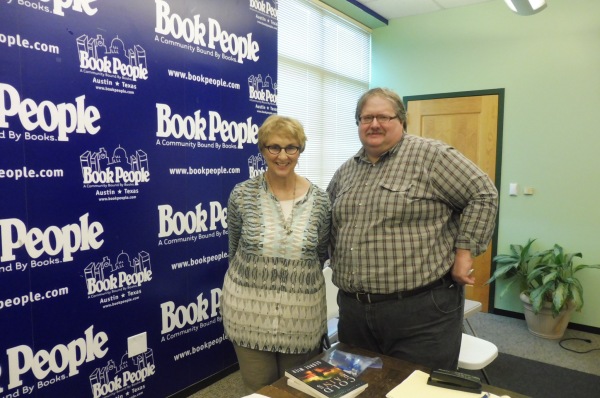Last Saturday I attended a writer’s workshop at Book People, sponsored by Mystery People and the Austin chapter of Sisters In Crime. I honestly didn’t think I’d learn much new. But I was wrong. *Note- Between classes we had drawings for giveaways like books and tote bags!
 It started with George Wier speaking about writing action scenes. He’s literally a pro at this. Just read any of his books. (www.billtravismysteries.com) It wasn’t about how to describe a blow-by-blow fistfight. It was more about how to add tension to a scene, how to make it move along. I don’t know about you, but I like bullet points. So I’ll share my notes in that manner.
It started with George Wier speaking about writing action scenes. He’s literally a pro at this. Just read any of his books. (www.billtravismysteries.com) It wasn’t about how to describe a blow-by-blow fistfight. It was more about how to add tension to a scene, how to make it move along. I don’t know about you, but I like bullet points. So I’ll share my notes in that manner.
- Before you can add action, you must put the reader in the moment. They won’t follow anything if they aren’t there. To accomplish this, describe the lay of the land and the surroundings.
- What are the results of the action? There should be consequences or the reader won’t care.
- The scene must have a beginning, middle, and end.
- Don’t describe things in terms of time. (aka- three hours later). Believe it or not, that doesn’t do anything for the reader. Time isn’t as tangible as distance. “They walked down a flight of stairs.” Is much easier for the reader to see and instantly understand.
- Perception is everything. Use all the senses. Have your characters be aware of their breathing, their surroundings, sounds, pain, everything.
The idea of writing about distance instead of time interests me. All of the things listed above make sense, but the idea that the reader can intuitively understand distance better than the concept of time is fascinating.
Scott Montgomery of Book People recommended the book, The Killer Inside Me by Jim Thompson. He said it was a good example of what Wier was talking about.
Cutting up between classes. Friend and author Billy Kring dropped by. He’s trying to distract me while George Wier looks on.
Next at the workshop was Terry Shames. She gave us many tips on how to writing compelling settings. And she should know. She does an excellent job of describing the Texas town where her Samuel Craddock series takes place. (www.terryshames.com) I came away with the concept of interior settings and exterior settings. No, not what a living room looks like, interior as in what’s going on inside a character. (More bullet points!)
- Treat your scenes as characters.
- The way to make your story interesting is to show how the interior setting (of characters) intersect with the exterior setting. How would someone from a Texas ranch interact with the people and setting of New York city? How would that same person act in their own hometown?
- The devil is in the details. Immerse the reader in the setting. You don’t have to do an information dump. (Please don’t.) But you can provide things like smells and sounds.
- If you aren’t familiar with a place, research it. Talk to people who know the place.
- Above all, know how your characters would interact with the setting. Someone who almost drowned would have a different reaction to falling in the water than someone who is an Olympic swimmer. So Know Your Characters!
- Every scene should try to have-
- Action
- Dialogue
- Physical description of setting
- Physical description of characters
- Internal thinking
- Internal physical descriptions.
- A good rhythm of a scene would be: 2/1/2, 4/3/5, 6/2/1. Try it and see what happens.
After lunch we gathered for the last class about collaboration. Brent Douglass and James Dennis, two of the three authors who make up the persona of Miles Arecenaux (www.milesarceneaux.com), led a funny discussion on their journey of collaborative writing. They started their first book back in the days before email. Thank goodness the days of mailing a manuscript back and forth are gone. Thank you email! So what are their tips?
- Don’t be afraid to be honest with each other. Actually, they said to be brutally honest. Treat each other like siblings.
- Play up to your partners’ strengths. You are different people with different experiences. You that to your advantage.
- Work to maintain “one voice” for your book. It will get easier with practice but it will also take many edits to achieve this.
- Defer to people with experience. (Again, take advantage of your partner’s strengths.)
- It helps to build accountability. If you know that you’re expected to get your part done by a certain time and the others are counting on you, you better do it.
- Broadcast gratitude. Not only show gratitude to your partners, show gratitude to other writers.
(Collaborating sounds interesting. I think I’d like to take a stab at that just for fun.)
 The last event was a panel discussion that was very informal. It was about publishing, marketing, and networking. Honestly, I was so caught up in listening, I forgot to take notes! All the speakers were charming, personable, and informative. It was worth every moment that I was there.
The last event was a panel discussion that was very informal. It was about publishing, marketing, and networking. Honestly, I was so caught up in listening, I forgot to take notes! All the speakers were charming, personable, and informative. It was worth every moment that I was there.
I’d like to say thank you to Book People and Scott Montgomery of Mystery People for hosting us!










Share your thoughts!